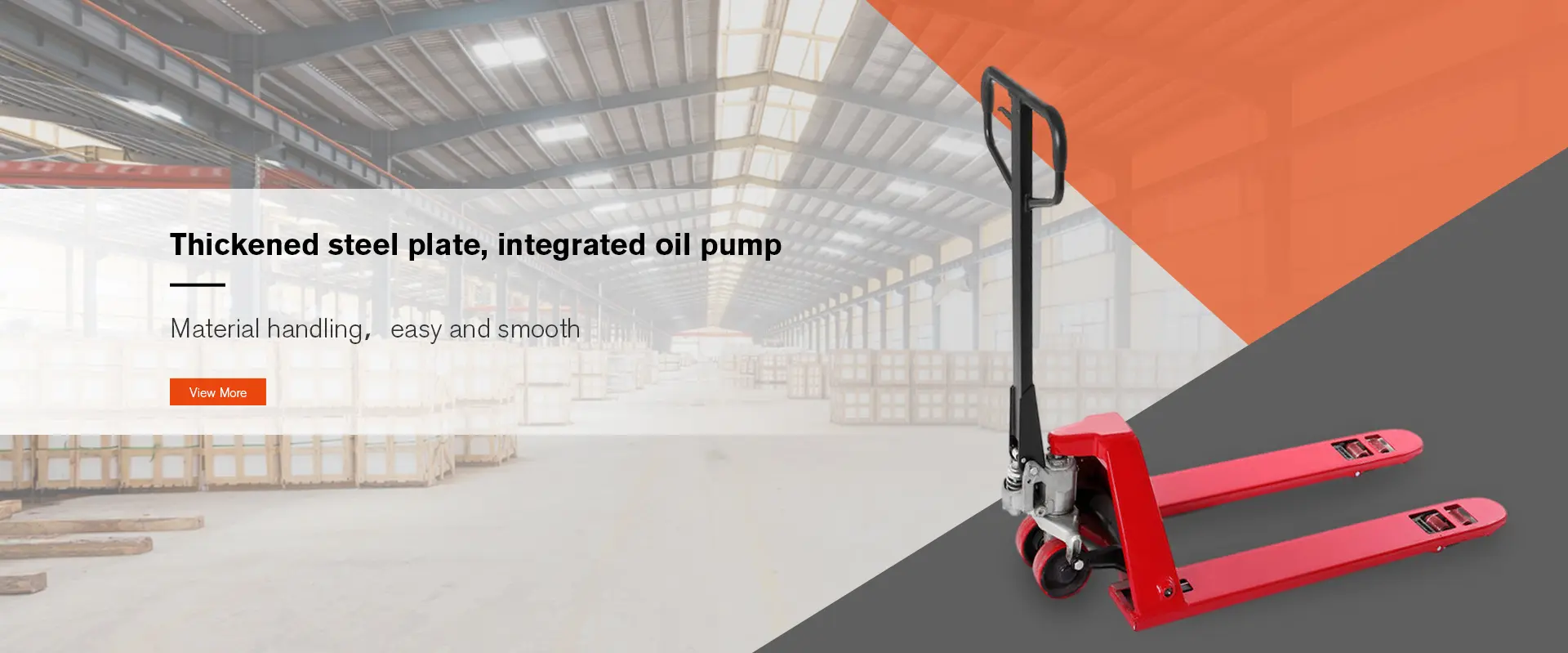


Understanding Different Types of Pallet Trucks
Pallet trucks, also known as pallet jacks, are essential tools in warehouses, distribution centers, and manufacturing environments. They are designed to lift and move pallets—a common way of stacking goods for storage and transportation. While they might seem straightforward, there are various types of pallet trucks, each serving distinct functions and offering specific advantages. Understanding these different types can help businesses make the right choice for their operational needs.
Manual Pallet Trucks
Manual pallet trucks are the most basic type. Operated by a hydraulic system, these trucks are maneuvered by hand. The operator lifts the pallet by using a pump lever, which activates the hydraulic mechanism to raise the fork. These trucks are cost-effective and require no power source, making them ideal for small operations with limited budgets. They excel in loading and unloading pallets in tight spaces and are commonly seen in retail and small warehouse settings.
Advantages - Cost-effective. - Requires no electricity or batteries. - Easy to use in smaller spaces. Disadvantages - Labor-intensive and can be tiring with heavy loads. - Slower than electric alternatives.
Electric Pallet Trucks
Electric pallet trucks give a significant upgrade in efficiency and ease of use. These trucks are powered by electric motors, allowing for effortless lifting and moving of pallets with little manual effort. They are especially beneficial in environments where frequent transport of heavy loads is necessary over longer distances. Electric pallet trucks can be further categorized into two types walk-behind and ride-on models.
Walk-Behind Electric Pallet Trucks
These models allow the operator to walk alongside the truck while controlling its movement. They are ideal for tasks that require frequent stops and starts. With advanced safety features and ergonomic designs, walk-behind electric pallet trucks enhance productivity with less strain on workers.
Ride-On Electric Pallet Trucks
For larger operations, ride-on electric pallet trucks provide additional comfort and efficiency. Operators can ride along, which speeds up material handling, making it easier to transport large quantities of goods in a shorter time. These trucks are commonly used in vast warehouses and distribution centers where speed and ergonomy are priorities.

Advantages - Reduced physical labor. - Increased speed and efficiency. Disadvantages - Higher initial investment compared to manual trucks. - Requires charging and maintenance.
High-Lift Pallet Trucks
High-lift pallet trucks are designed for lifting pallets to greater heights, making them ideal for loading and unloading trucks or for use with shelving. These trucks feature a design that allows pallets to be raised to a comfortable working height, thereby reducing strain on the operator's back and arms. They are especially useful in environments where pallet movement is frequent and requires ergonomic handling.
Advantages - Reduces the risk of workplace injuries. - Increases efficiency during loading and unloading tasks. Disadvantages - Typically more expensive and require a bit more space for operation.
Stainless Steel Pallet Trucks
In industries like food and pharmaceuticals, the cleanliness of equipment is vital. Stainless steel pallet trucks are designed to resist corrosion while being easy to clean and sanitize. These trucks are perfect for environments that require stringent hygiene standards, ensuring that the movement of goods does not compromise safety or cleanliness.
Advantages - Durable and easy to clean. - Corrosion-resistant, enhancing longevity.
Disadvantages - Higher cost due to the material. - Heavier compared to standard pallet trucks.
Conclusion
Selecting the right type of pallet truck is essential for optimizing material handling efficiency in any business. Each type has its advantages and limitations, and the choice largely depends on the specific needs of the operation, such as load capacity, frequency of use, and workspace layout. By understanding the different types available, businesses can ensure they invest in the right equipment to enhance productivity and maintain workplace safety.



